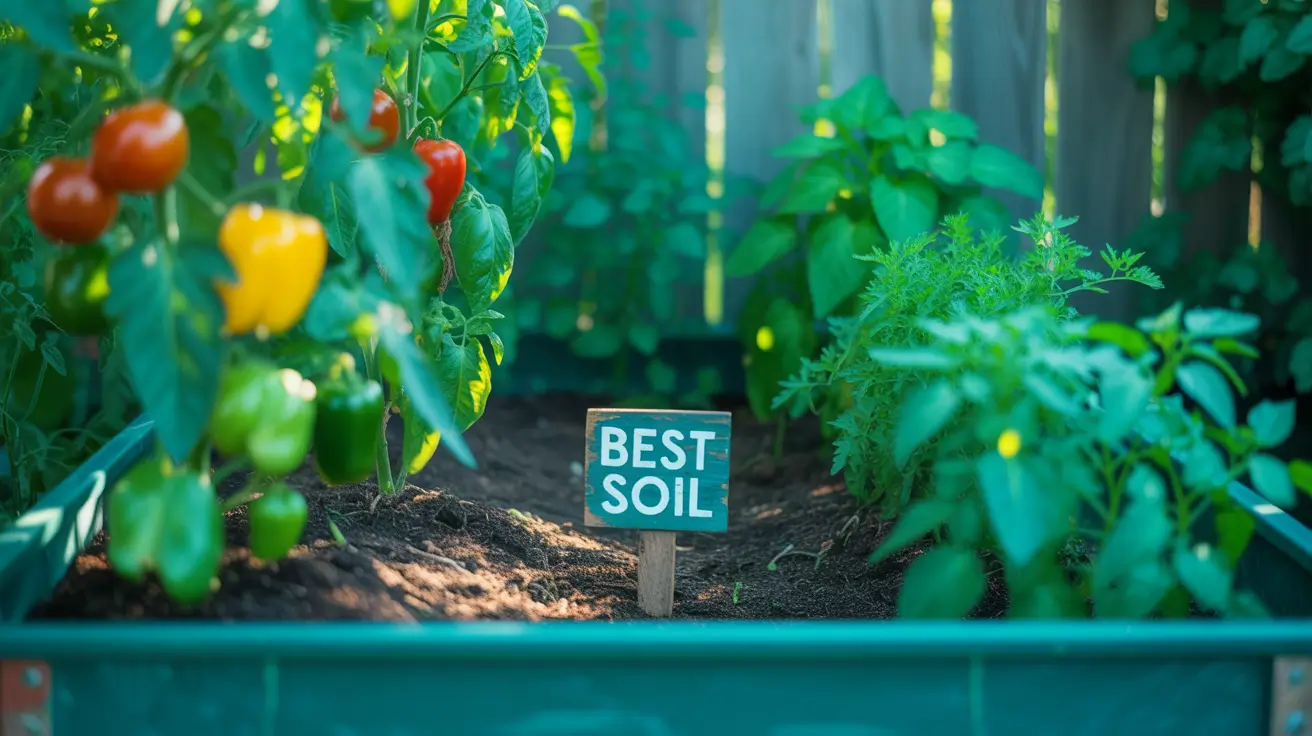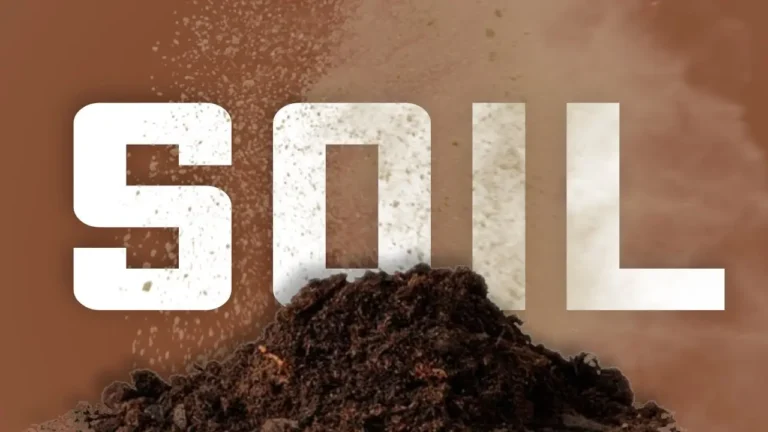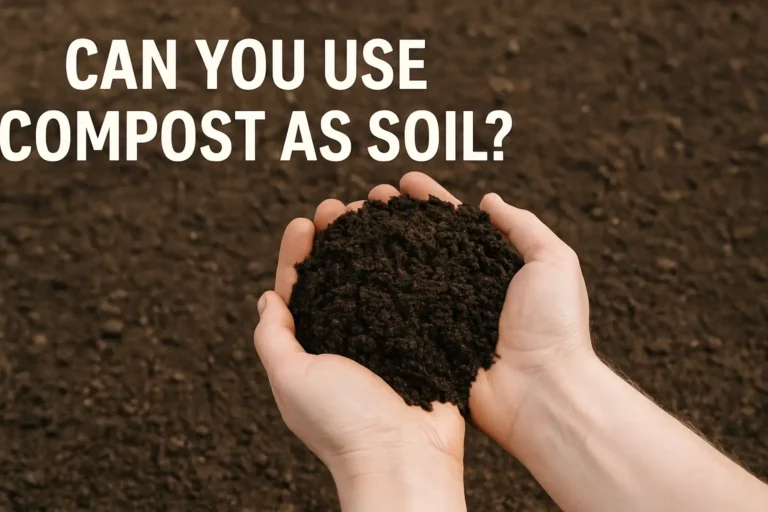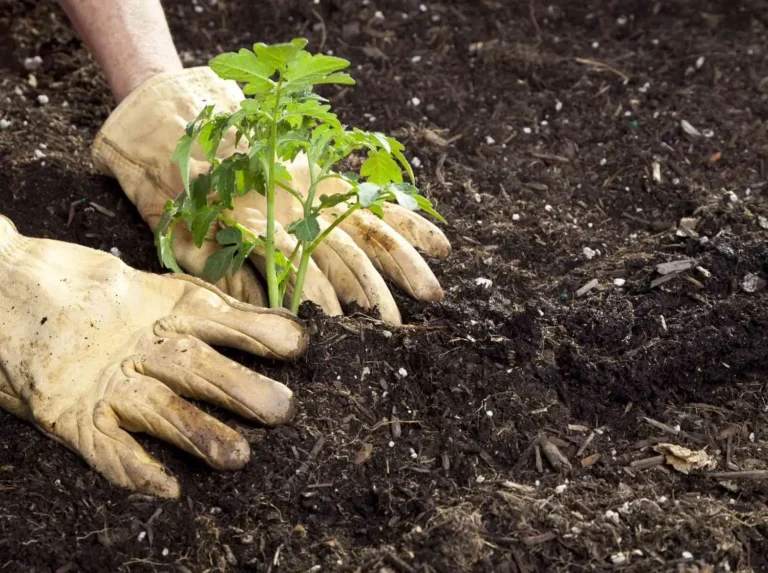Best Soil for Raised Beds: Expert-Tested Recipes for Maximum Garden Success
Creating the perfect raised bed garden starts with one crucial foundation: exceptional soil. While many gardeners rush to purchase plants and seeds, the secret to thriving vegetables, herbs, and flowers lies beneath the surface in the soil mix you choose.
After analyzing dozens of soil combinations and consulting with master gardeners across the country, this comprehensive guide reveals everything you need to know about selecting, creating, and maintaining the best soil for raised beds. Whether you’re a complete beginner or looking to upgrade your existing garden, you’ll discover proven strategies that guarantee healthier plants and bigger harvests.
Why Your Raised Bed Soil Choice Makes or Breaks Your Garden
Your raised bed is essentially an expensive container without quality soil to fill it. The difference between garden success and failure often comes down to soil quality—not the seeds you plant or the tools you use.
Consider this: vegetables and herbs complete their entire life cycle in just 30-120 days. Unlike deep-rooted perennial plants that can push through challenging soil conditions, these tender annuals need loose, nutrient-rich growing medium from day one.
Poor soil choices lead to:
- Stunted plant growth and yellowing leaves
- Root rot from inadequate drainage
- Pest problems due to stressed plants
- Disappointing harvests despite proper care
The right soil mix transforms your raised beds into productive growing machines that can yield three to four times more food than traditional in-ground gardens.
Understanding the Science Behind Perfect Raised Bed Soil
The Two Critical Characteristics Every Raised Bed Soil Must Have
1. Nutrient Density
Your plants can only provide you with the vitamins and minerals they absorb from the soil. Nutrient-poor soil produces nutrient-poor vegetables. The most successful raised bed soils contain 25-50% organic matter by volume, creating a rich foundation for healthy plant development.
2. Optimal Drainage and Water Retention
Think of perfect soil like a high-quality sponge—it holds water long enough for roots to absorb what they need, then allows excess moisture to drain away. This prevents both drought stress and root rot, the two most common causes of plant failure.
The Four Essential Elements of Superior Raised Bed Soil
Every exceptional soil mix contains these fundamental components in proper balance:
Clay (Structure and Stability)
Clay particles provide the structural foundation that anchors roots securely. Without adequate clay content, plants become unstable and topple over as they mature. However, too much clay creates drainage problems.
Silt (Nutrient Storage)
Dark, nutrient-rich silt acts as the soil’s nutrient warehouse. This intermediate-sized particle holds essential minerals and releases them gradually to plant roots. Quality silt gives soil its rich, dark color.
Sand (Drainage and Aeration)
Coarse sand creates essential air pockets and drainage channels throughout the soil. This prevents waterlogging while ensuring oxygen reaches root systems. Never use fine sand, which can create concrete-like conditions when mixed with clay.
Organic Matter (Life and Fertility)
Compost and other decomposed organic materials provide both nutrients and beneficial microorganisms. This living component of soil continues breaking down over time, releasing a steady stream of plant food.
The Top 5 Raised Bed Soil Recipes That Guarantee Success
Recipe #1: The Classic 1/3 Mix (Best for Beginners)
This time-tested combination from the Square Foot Gardening method delivers consistent results:
- 1/3 High-Quality Compost (from multiple sources)
- 1/3 Peat Moss or Coconut Coir (moisture retention)
- 1/3 Vermiculite (drainage and aeration)
Why it works: This soilless mix eliminates weed seeds while providing perfect drainage. The diverse compost sources ensure broad nutrient availability.
Best for: New gardeners, areas with poor native soil, containers 8+ inches deep
Recipe #2: The 103 Professional Blend (Master Gardener Favorite)
Developed by professional garden designers, this balanced mix mimics ideal natural soil:
- 1 part Quality Topsoil (structure)
- 1 part Coarse Sand (drainage)
- 3 parts Premium Compost (nutrients and organic matter)
Pro tip: Add 1 cup of organic fertilizer per cubic yard for enhanced nutrition.
Best for: Experienced gardeners, long-term soil building, deeper beds (12+ inches)
Recipe #3: The Heavy Feeder Mix (Maximum Nutrition)
Perfect for nutrient-hungry crops like tomatoes, peppers, and squash:
- 40% Quality Topsoil
- 40% Aged Compost and Composted Manure
- 20% Drainage Amendment (perlite, coarse sand, or coconut coir)
Enhancement: Add 2 cups worm castings per cubic foot for slow-release nutrition.
Best for: Tomatoes, peppers, cucumbers, melons, heavy-feeding vegetables
Recipe #4: The Budget-Friendly Mix (Great Results, Lower Cost)
50% Quality Topsoil mixed with 50% Compost
This simple combination provides excellent results at half the cost of premium mixes. Layer rather than mix for even better performance—topsoil on bottom, compost on top.
Money-saving tip: Source topsoil from your garden pathways and buy compost in bulk.
Best for: Large raised beds, budget-conscious gardeners, starting gardens
Recipe #5: The Deep Bed Foundation Mix (16+ Inch Beds)
For deeper raised beds, create layers for optimal plant performance:
Bottom 8 inches: Coarser mix with more topsoil and sand
Top 8 inches: Finer, compost-rich growing medium
This approach maximizes drainage at the bottom while providing rich nutrition where most roots develop.
Buying Guide: The Best Pre-Made Raised Bed Soils
Premium Options Worth the Investment
Miracle-Gro Organic Raised Bed and Garden Soil offers excellent convenience with OMRI-listed organic ingredients. This peat-free formula includes quick-release natural fertilizer that feeds plants for up to 2 months. Perfect for gardeners who want premium results without mixing their own soil.
What makes it special: Contains aged bark, compost, and coconut coir for optimal drainage and nutrition. The added fertilizer eliminates guesswork for new gardeners.
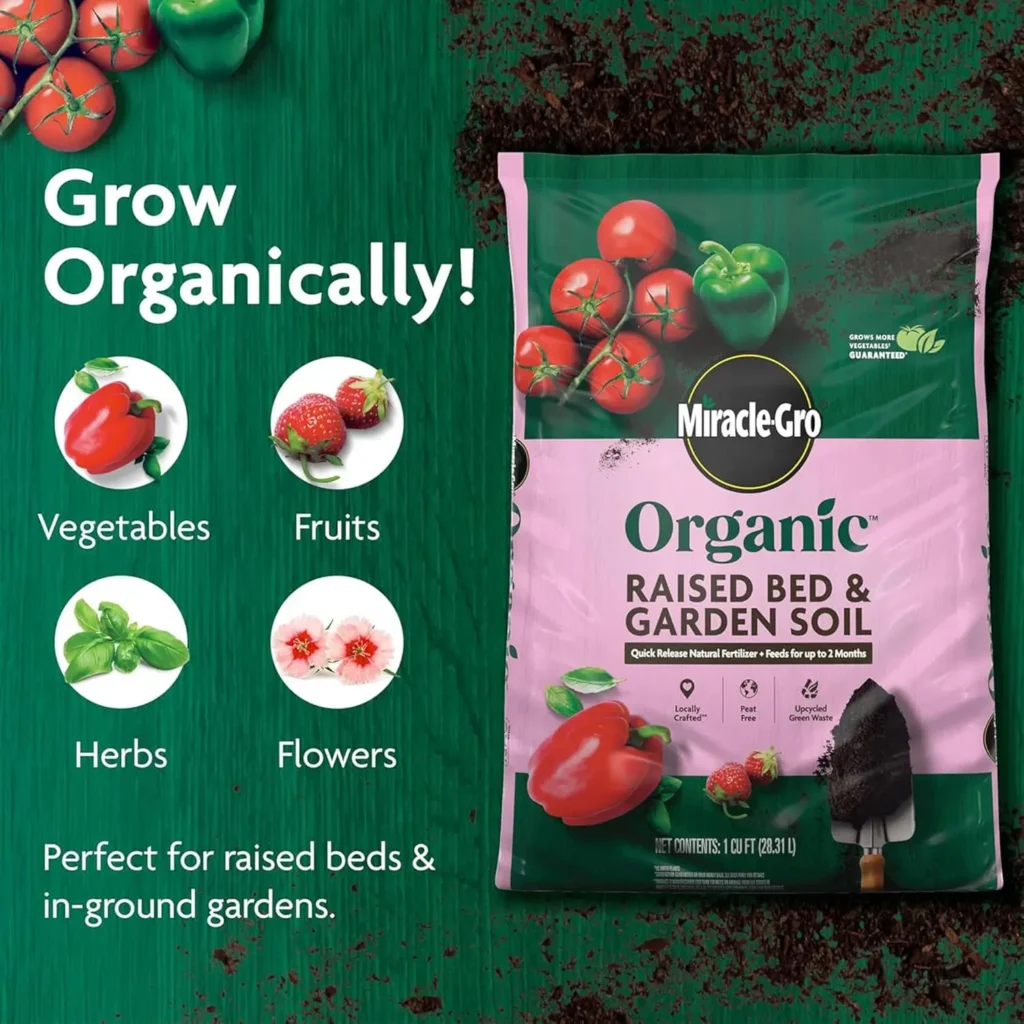
FoxFarm Raised Bed Planting Mix combines aged forest products, sphagnum peat moss, and earthworm castings for exceptional plant performance. This professional-grade mix delivers restaurant-quality vegetables and herbs.
Professional insight: Many commercial growers choose FoxFarm for its consistent quality and proven results across diverse growing conditions.

Budget-Friendly Quality Choices
Purple Cow Organics Raised Bed Mix, 1.5 Cubic Foot Bag, Safe & Naturally-Occurring Plant-Based provides excellent value with kelp meal, composted poultry manure, and earthworm castings. This OMRI-listed option delivers premium nutrition at an accessible price point.
Value proposition: Contains the same high-quality ingredients as premium brands but costs significantly less per cubic foot.
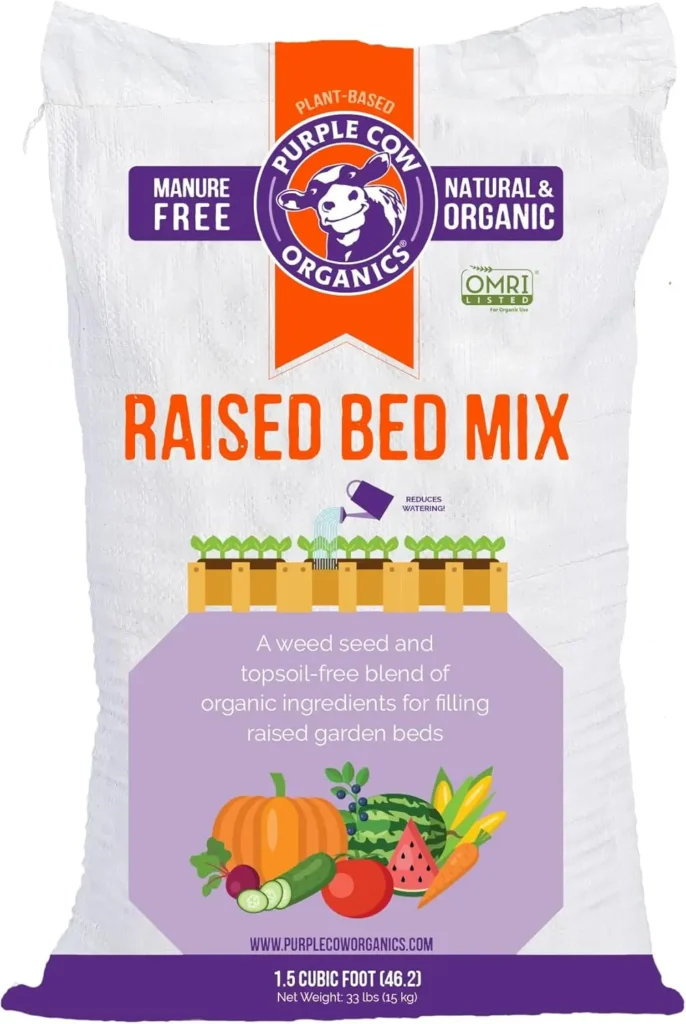
Black Gold Natural & Organic Raised Bed Mix features superior moisture retention and professional-quality ingredients. This ready-to-use blend works exceptionally well for both beginners and experienced gardeners.
Key advantage: Excellent moisture management reduces watering frequency while maintaining optimal growing conditions.
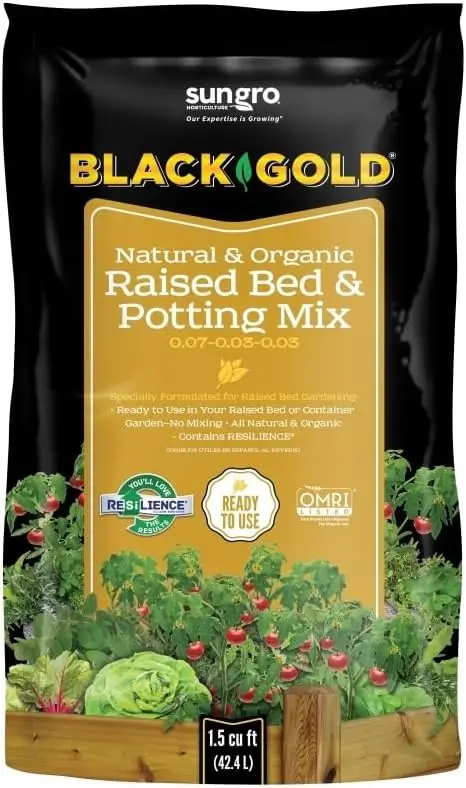
Soil Depth Requirements: Getting the Foundation Right
Minimum Depth Guidelines by Plant Type
6-8 inches: Lettuce, spinach, arugula, herbs, radishes
8-12 inches: Bush beans, peas, carrots, beets, onions
12-18 inches: Broccoli, cabbage, peppers, bush tomatoes
18-24 inches: Indeterminate tomatoes, eggplant, large peppers
24+ inches: Asparagus, artichokes, deep-rooted perennials
Why Deeper Is Often Better
Beds 16 inches or deeper provide several advantages:
- Greater soil volume retains more moisture
- Extended root development increases nutrient uptake
- Better temperature stability protects roots
- Reduced maintenance and watering frequency
Professional recommendation: Build beds at least 12 inches deep, with 16-18 inches being the sweet spot for most vegetables.
For detailed calculations on soil volume needs, check out our comprehensive guide on how much topsoil you need for your specific raised bed dimensions.
Advanced Soil Management: Maintaining Peak Performance
Seasonal Soil Enhancement Schedule
Spring Preparation (Before Planting)
Add 1-2 inches of fresh compost to all beds. This replenishes nutrients consumed by previous crops and introduces beneficial microorganisms for the growing season.
Mid-Season Boost (June-July)
Side-dress heavy feeders with additional compost or organic fertilizer. Watch for yellowing leaves, which often indicates nutrient deficiency rather than watering issues.
Fall Renewal (After Harvest)
Plant cover crops like winter rye or crimson clover to add nitrogen and prevent soil erosion. Alternatively, add a thick layer of leaves or compost to decompose over winter.
Troubleshooting Common Soil Problems
Problem: Plants grow well initially, then yellow and decline
Solution: Add more compost and organic matter—your soil needs additional nutrition
Problem: Plants remain small despite adequate water and sun
Solution: Improve drainage by adding coarse sand or perlite to break up compacted areas
Problem: Plants topple over easily
Solution: Increase soil structure by adding quality topsoil or clay amendments
pH Management for Optimal Nutrient Availability
Most vegetables thrive in slightly acidic to neutral soil (pH 6.2-6.8). Test your soil pH annually and adjust as needed:
To lower pH (make more acidic): Add sulfur or organic matter
To raise pH (make more alkaline): Add lime or wood ash
For detailed guidance on soil pH adjustment, including when and how to use lime and sulfur effectively, read our expert guide on soil pH adjustment techniques.
Plant-Specific Soil Recommendations
Tomatoes and Peppers: The Heavy Feeders
These nutrient-hungry plants demand rich, well-draining soil with excellent organic matter content. Use the Heavy Feeder Mix recipe with these enhancements:
- Add 2 cups worm castings per cubic foot
- Include slow-release organic fertilizer
- Ensure 18+ inch soil depth
- Maintain consistent moisture levels
Leafy Greens: Quick and Easy
Lettuce, spinach, and arugula prefer cooler, moisture-retentive soil. The Classic 1/3 Mix works perfectly with these modifications:
- Increase coconut coir for better water retention
- Add extra compost for immediate nutrition
- Ensure 6-8 inches minimum depth
- Plant in partial shade during hot weather
Root Vegetables: Loose and Deep
Carrots, beets, and radishes need loose soil for proper root development. Avoid clay-heavy mixtures and focus on:
- Maximum drainage with extra sand or perlite
- Fine-textured compost that won’t impede root growth
- 12+ inch depth for full-size carrots and beets
- Consistent moisture without waterlogging
Understanding different soil types and their impact on plant growth helps you customize your raised bed soil for specific crops and growing conditions.
Cost-Effective Strategies: Building Great Soil on Any Budget
Bulk vs. Bagged: Making the Right Choice
Choose Bulk Delivery When:
- Filling beds larger than 20 cubic feet
- Cost per cubic yard is 40-60% less than bags
- You have easy access for delivery trucks
- Multiple beds need filling simultaneously
Choose Bagged Soil When:
- Filling smaller beds (under 15 cubic feet)
- No delivery access available
- Trying different soil recipes
- Storing soil for future use
DIY Compost: The Ultimate Soil Amendment
Creating your own compost dramatically reduces soil costs while improving garden performance. Start composting now for next season’s soil mix:
Green Materials (Nitrogen): Kitchen scraps, grass clippings, fresh leaves
Brown Materials (Carbon): Dry leaves, cardboard, paper, wood chips
Ideal Ratio: 3 parts brown to 1 part green materials
Time-saving tip: Many municipalities offer free or low-cost compost to residents—check with your local waste management department.
Pathway Soil Recovery Method
Reclaim valuable topsoil from your garden pathways:
- Cover 2-foot wide pathways with cardboard or newspaper
- Wait 6-8 weeks for vegetation to die
- Remove top 2-3 inches of soil and dead vegetation
- Add recovered soil to raised beds
- Cover pathways with permanent mulch
This method can provide 20-30% of your soil needs at zero cost.
Seasonal Maintenance: Keeping Your Soil Thriving
Spring Activation Checklist
- Test soil temperature: Wait until soil reaches 55°F before planting warm-season crops
- Add fresh compost: 1-2 inch layer across all beds
- Check drainage: Ensure beds drain within 24 hours after heavy rain
- Assess soil level: Add additional soil if beds have settled significantly
Summer Monitoring
- Mulch heavily: 2-3 inches of organic mulch conserves moisture and feeds soil
- Watch for compaction: Avoid walking on wet soil
- Monitor plant health: Yellowing often indicates soil nutrient depletion
- Maintain consistent moisture: Deep, infrequent watering encourages strong root development
Fall Preparation
- Plant cover crops: Winter rye, crimson clover, or Austrian peas
- Add organic matter: Chopped leaves, compost, or aged manure
- Remove diseased plants: Prevent soil-borne disease carryover
- Plan next year’s rotation: Different plant families have varying soil needs
Winter Protection
- Cover bare soil: Prevents erosion and nutrient leaching
- Add coarse organic matter: Branches, corn stalks provide structure
- Plan improvements: Order amendments for spring soil enhancement
- Document performance: Record which soil mixes worked best
Advanced Techniques: Maximizing Your Soil Investment
Living Mulch Systems
Interplant nitrogen-fixing cover crops like white clover between main crops. These living mulches:
- Continuously add nitrogen to soil
- Suppress weeds naturally
- Retain soil moisture
- Attract beneficial insects
Mycorrhizal Inoculation
Add beneficial fungi to enhance plant nutrient uptake:
- Increases root surface area by 100-1000%
- Improves drought tolerance
- Enhances disease resistance
- Extends effective rooting zone
Application tip: Mix mycorrhizal inoculant directly with seeds or transplant roots for maximum benefit.
Biochar Integration
This stable carbon amendment improves soil structure for decades:
- Increases water retention by 18%
- Provides habitat for beneficial microorganisms
- Slowly releases nutrients over time
- Sequesters carbon permanently
Usage rate: Add 5-10% biochar by volume to soil mixes for long-term benefits.
Troubleshooting Guide: Solving Common Soil Problems
Drainage Issues
Symptoms: Standing water, fungal diseases, rotting roots
Causes: Too much clay, compacted soil, inadequate drainage amendments
Solutions:
- Add coarse sand (not fine sand)
- Incorporate perlite or pumice
- Improve bed construction with drainage layer
- Consider raised bed elevation
Nutrient Deficiencies
Nitrogen Deficiency: Yellowing leaves starting from bottom
Phosphorus Deficiency: Purple leaf coloration, stunted growth
Potassium Deficiency: Brown leaf edges, weak stems
Iron Deficiency: Yellow leaves with green veins
Universal solution: Add 2-3 inches of quality compost, which provides balanced nutrition and improves soil biology.
Compaction Problems
Prevention strategies:
- Never work wet soil
- Use permanent pathways between beds
- Add organic matter annually
- Avoid over-tilling
Remediation techniques:
- Broadfork compacted areas
- Add coarse organic matter
- Implement no-till methods
- Consider rebuilding severely compacted beds
Expert Tips: Professional Secrets for Superior Soil
The 80/20 Rule
80% of your garden’s success comes from soil quality, while only 20% depends on plant selection, timing, and technique. Invest proportionally—spend more on exceptional soil than expensive plants.
Soil Testing Insights
Test every 2-3 years rather than annually unless problems occur. Focus on:
- pH levels (6.2-6.8 optimal)
- Organic matter content (aim for 5-8%)
- Major nutrients (N-P-K)
- Heavy metals (especially lead in urban areas)
The Compost Tea Advantage
Monthly applications of compost tea dramatically improve plant health:
- Steep 1 cup compost in 1 gallon water for 24-48 hours
- Strain and apply directly to soil and leaves
- Introduces beneficial microorganisms
- Provides gentle, immediate nutrition
Temperature Management
Soil temperature affects root development more than air temperature:
- Use black plastic or dark mulch to warm soil in spring
- Apply light-colored mulch to cool soil in summer
- Monitor soil temperature 2 inches deep
- Plant when soil reaches optimal temperature for each crop
Frequently Asked Questions
Q: Can I use regular potting soil in raised beds?
A: Regular potting soil works for shallow beds (6-8 inches) but becomes expensive for larger installations. It also drains too quickly for most vegetables in deeper beds.
Q: How often should I replace raised bed soil?
A: Never replace quality soil completely. Instead, add 1-2 inches of compost annually and refresh specific components as needed.
Q: What’s the difference between topsoil and garden soil?
A: Topsoil is the natural top layer of earth, while garden soil is specifically formulated for growing plants. Garden soil typically contains more organic matter and better drainage.
Q: Should I add fertilizer to pre-made soil mixes?
A: Many quality mixes include slow-release fertilizers. Check the label—if fertilizer is included, additional feeding may not be necessary for 4-6 weeks.
Q: Can I make my own soil mix cheaper than buying it?
A: For large beds (30+ cubic feet), DIY mixing typically costs 30-50% less than premium bagged products. For smaller beds, the convenience of pre-made mixes often justifies the cost.
Your Path to Raised Bed Success Starts Here
Perfect raised bed soil isn’t complicated—it just requires the right information and quality ingredients. Whether you choose a proven recipe from this guide or purchase premium pre-made mixes, focus on these fundamental principles:
- Prioritize drainage and organic matter content
- Invest in quality ingredients from the start
- Plan for long-term soil building, not quick fixes
- Match soil depth to your chosen crops
- Maintain soil health through regular organic matter additions
The soil recipes and strategies in this guide have helped thousands of gardeners transform their raised beds into productive growing systems. Your investment in exceptional soil pays dividends every harvest season through healthier plants, higher yields, and more nutritious food for your family.
Start building your perfect raised bed soil today—your future garden will thank you for creating the foundation that makes everything else possible. Remember, you can never be more generous to soil than it is to you. Feed it well, and it will feed your plants, which will feed you back ten times over.
Ready to calculate exactly how much soil you need for your raised bed project? Use our soil calculator to determine precise volumes and costs for your specific garden dimensions.
